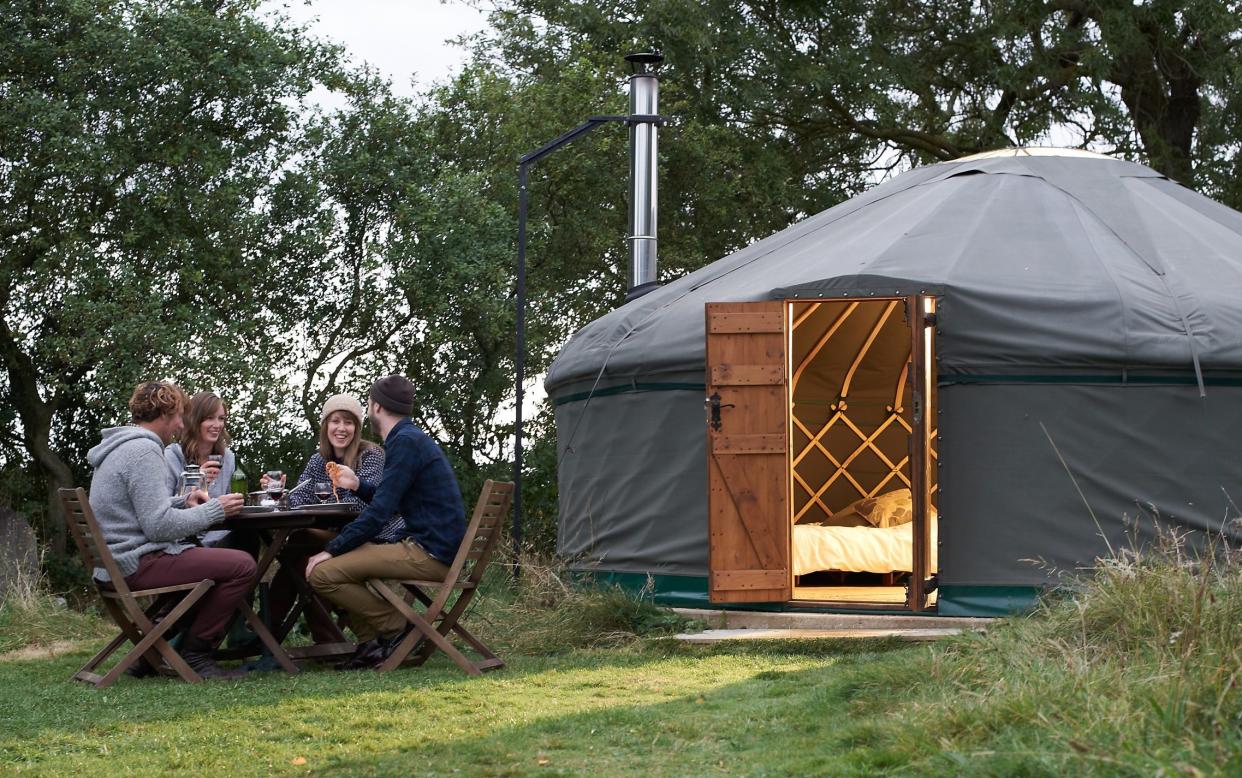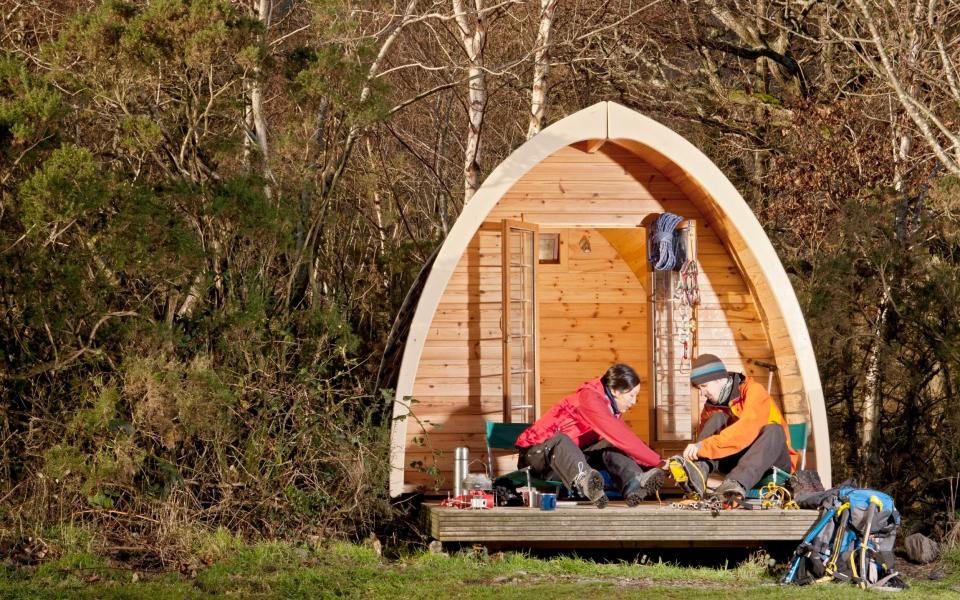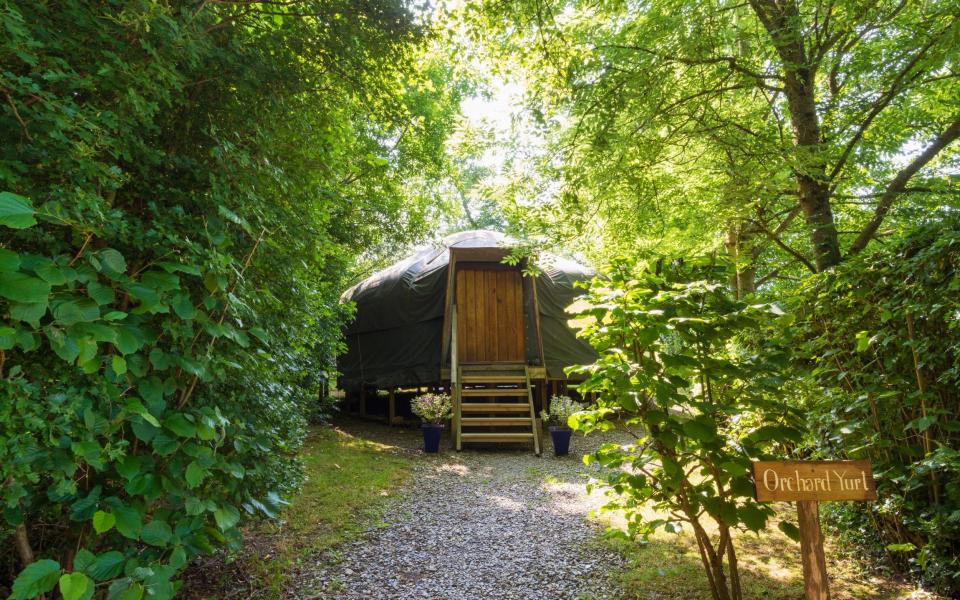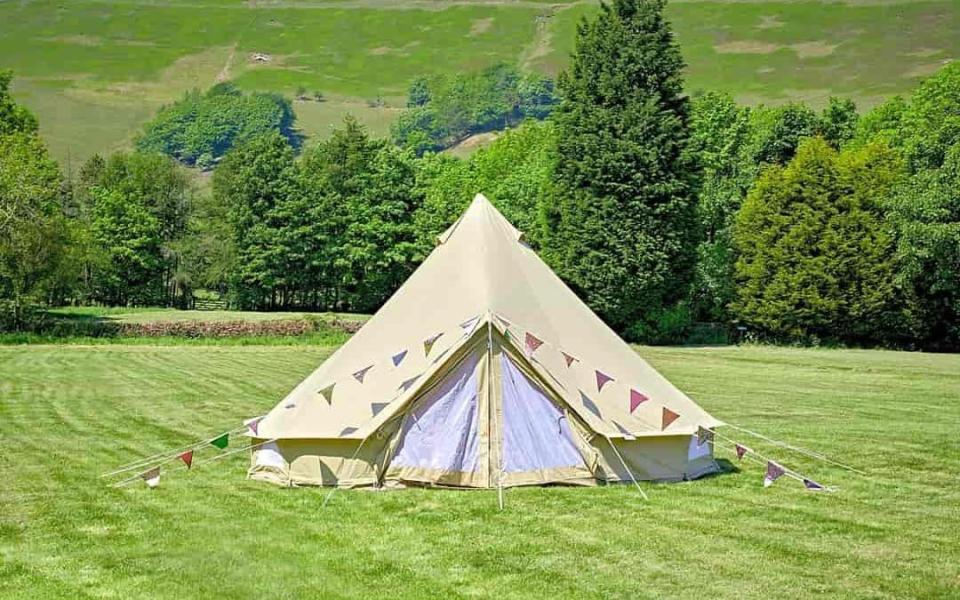How did glamping become such a staggering waste of money?

Glamping once offered salvation for millions of Britons who like their great outdoors in comfortable (and still affordable) doses. Roll mat-induced backache would be swapped for warm bedding and proper shelter from the elements, but crucially there was still the promise of the wild, with the same dewy grass and bracing countryside walks lurking outside. It would cost more than pitching a tent, of course, but the two activities were cut from the same cloth.
No longer. Slowly but surely, additional levels of opulence have been added. Hot tubs, Aesop lotions and Emma mattresses are now expected. An outdoor roll-top bath, judging by many of the current listings, seems to have become a prerequisite. And with all that comes higher room rates.
No longer a campsite with a few extras, the 21st-century glampsite is an extravagant, indulgent place to spend a weekend, with prices comparable to luxury hotels. The countryside is secondary – to be viewed out of a picture window rather than communed with.

Shell Robshaw-Bryan, editor of the Camping With Style blog, initially welcomed the shift to more elegant options. After all, camping can be a trial – struggling to erect a tent in inclement weather, while also attempting to entertain the children, can remove all dreams of a tranquil weekend break.
“Those first ‘glamping’ options were limited to pre-erected bell tents or basic timber cabins, which admittedly did feel a little like staying in a shed,” says Robshaw-Bryan.
“So in some ways it’s good that it has evolved, and there are many more choices as a result of that popularity. There are now buses, aeroplanes, boats in fields and spherical tree houses suspended in woodland. It’s exciting. But the prices are now utterly extortionate.”
How expensive are we talking? The average price of a night in a shepherd’s hut, according to Airbnb, is a princely £146. For slightly less, you could snag a room in the colourful Portobello Road hotel, The Distillery, which comes with luxuries like central heating. A night in The Yan, a characterful boutique offering in Grasmere, is even cheaper, starting at around £100. Quite what the shepherds of yesteryear would make of it all we can only imagine.

Such high prices are familiar to Robshaw-Bryan. “There was one place I stayed that was basically a five-metre bell tent that was totally empty – so we still had to bring all our camping equipment too – it cost £140 per night,” she says.
“I won’t name names but that was really shocking. I could have brought my own bell tent and had it up in ten minutes. It’s becoming outside of a lot of people’s budgets.”
The numbers go higher still. A one wood-panelled shepherd’s hut in Somerset (sleeps two) is listed on Canopy & Stars at £265 a night. Another in Cumbria starts at £390, although admittedly this includes access to the facilities at a nearby luxury hotel.
Can these glamping prices be justified? The fairest comparison is probably with other self-catering options, rather than hotels, as costlier glamping accommodation usually has a small kitchen area and an en-suite bathroom. But looking at the 50 highest-rated properties on cottages.com, all of which are considerably larger than a typical glamping pod, the average nightly rate is £126 – cheaper than those shepherd’s huts.
Is our obsession with quirky accommodation to blame? Airbnb has a “trending” filter, allowing holidaymakers to find the most “viral” places to stay. Extreme and often impractical locations are coveted, meaning lots of treehouses and remote cabins – and not many traditional cottages.

The industry has responded by offering increasingly ostentatious options in the hope that they too will be catapulted by influencers into notoriety. That isn’t necessarily a gimmick – a skylight that allows stargazing from bed, for example, may well enhance a stay – but it drives up prices.
Robshaw-Bryan thinks reliance on social media fame creates its own problems. “The issues with glamping go both ways,” she says. “It’s not just keen campers feeling ripped off. People who have never camped, and would never camp, are turning up to these places expecting a hotel experience. They’re expecting four-star amenities and wearing things that aren’t right for the countryside.”
The glamping boom has also scores of cabins put up in ostensibly remote places that turn out to be nothing of the sort: bordering A roads, for example, or within earshot of noisy farmyard machinery. If every entrepreneurial landowner is wheeling a boutique shepherd’s hut into the corner of a field, there are likely to be duds among the gems, and it can be hard to tell before arrival whether your “hidden” accommodation is genuinely secluded.
“It’s different for everyone, but location really matters for me,” says Robshaw-Bryan. “As secluded as possible is ideal – I don’t want a load of other cabins nearby. Dark skies make a difference, as does being close to water.”
Almost all glamping sites will now claim to have these crucial characteristics, but whether they are truly tranquil is something of a gamble. That said, there are still some remarkably affordable options. Posh camping is still possible, and depending on your requirements, there are some excellent choices. Below are some of the best.
The private one

‘Millie’ is a cosy shepherd’s hut situated near Wegnall’s Mill in Herefordshire. Happily, this isn’t attempting to be a Grand Designs project in miniature: the decor is all simple wooden beams and mismatched furniture.

Owners have provided board games and a radio for entertainment, which means there’s no need to pack Monopoly. More impressive, though, is the location – the hut is tucked away in a private meadow bordered by a brook. From £95 per night.
The family one

The Orchard Yurt near Fowey in Cornwall manages to feel both luxurious and casual. There’s a wood burner inside to keep things toasty, plus beds for two adults and two children. A gas hob, a grill and a barbecue, complete with crockery and cutlery, are available in the yurt itself, which makes cooking easy.

For children who need activities, there is a hot tub just outside the yurt, plus communal space on the farm with books, games and comfortable sofas. Once they’ve gone to bed, the seating outside is an ideal spot for stargazing. From £110 per night.
The simple one

If camping is something you truly enjoy – but you’re looking for something slightly more snug – Newfold Farm in Derbyshire is a great option. The pre-erected bell tents are, undoubtedly, much easier than your standard equipment, plus they come with bed linen, lanterns, a firepit and a kettle. The site is on the edge of the Pennine Way, making it ideal for long-distance hikes or bike rides. From £80 per night.


